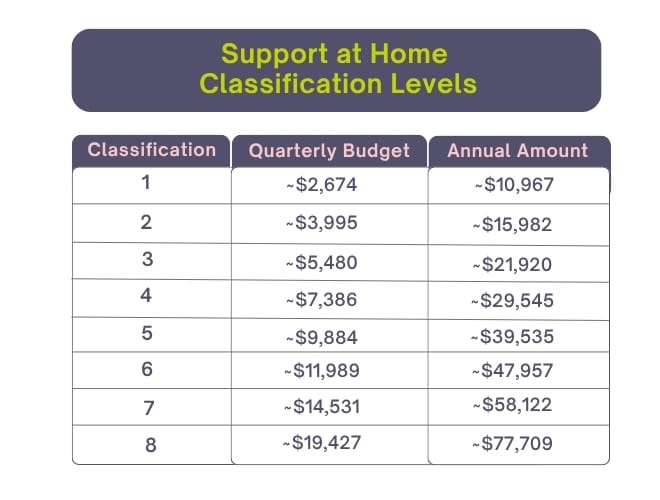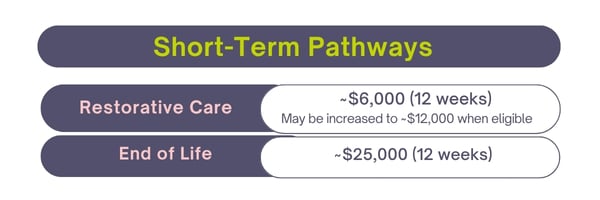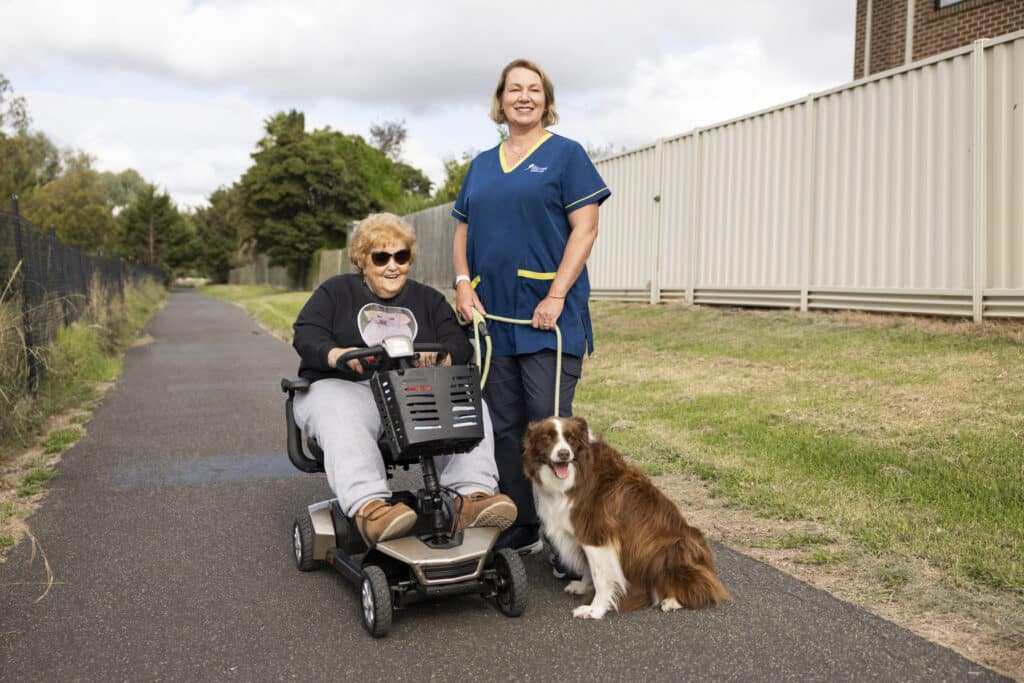What is Support at Home funding?
Support at Home provides partial or full government funding for older people to support them to continue living independently at home for as long as possible. The funding allows older people to access specific services that support their varying care needs, enhance their quality of life and maintain their living standards.
A government My Aged Care assessment will determine your eligibility for Support at Home funding, and the level of support most suitable for you.

What are the funding classification levels?
There are 8 funding levels that will enable you to access the services you require to continue to live well at home. Your Classification Level will depend on your needs, with Classification 1 for those with basic care needs who require minimal support to manage daily tasks. By contrast, Classification 8 is designed for individuals with extensive care needs, offering the highest level of funding.
(Budget amounts subject to change)
Your Support at Home Budget
Approved participants will receive their funding in the form of a quarterly budget, allocated to them every three months.
Budget quarters are:
- July to September
- October to December
- January to March
- April to June
Your quarterly budget will be managed by your chosen Support at Home provider and you. Your provider will monitor expenditure and ensure that your budget is covering the services you need during each quarter, as per your support plan.
Other Support at Home Funding
There are also two additional Short-Term Funding Pathways through Support at Home. Where people have temporary or additional support needs, these funding pathways can be accessed in addition to their ongoing Support at Home budget.

Restorative Care Pathway offers funding between $6,000 – $12,000 to access goal-oriented allied health services for a temporary period of up to 12 weeks. For example, recovering from a fall, or post-hospital rehabilitation. This funding can be used alongside ongoing Support at Home services.
End-of-Life Pathway funding recognises the preference of many people with life limiting illnesses to spend their final time at home. Eligible Support at Home clients can access up to $25,000 over a 12-16 week period for in-home care that complements their specialist palliative care program. For example, personal care, nursing services for symptom management, respite care for family members, oxygen supplies, psychological counselling.

Assistive Technology and Home Maintenance Scheme (AT-HM)
Additional funding for equipment, products and home modifications is available, separate to the funding you may receive through your quarterly budget.
Support at Home also considers an older person’s need for equipment and home modifications to enable them to continue to live safely at home.
The Assistive Technology and Home Maintenance Scheme (AT-HM), provides for low, medium or high tiers of funding between $500 for low requirements and $15,000 for high needs clients. For example, the AT-HM funds can be used to purchase back cushion supports, commode chairs, mobile hoists and face-to-face communication software.
Care Management
If you receive ongoing Support at Home services, 10% of your quarterly budget will automatically go towards care management from your provider. Your Case Manager works with you to assess, plan and oversee the delivery of the services and supports you need, and ensure you get the most value from your funding.

Do you currently have a Home Care Package?
Existing unspent funds that Home Care Package (HCP) clients have accumulated will be preserved, regardless of the amount, and you can access these when you have fully utilised your quarterly budget. Any funds accrued under the HCP program are not subject to quarterly rollover limits.
Statements and Invoices
To help you keep track of your budget, you will receive a statement from your provider. The statement will include a breakdown of all the expenses accrued from services and items you actually received during the quarter.
If you are required to pay co-contributions, your provider will also issue you with an itemised invoice for your required co-contribution.

Understanding Support at Home (SAH) classifications, budgets, and statements can feel overwhelming, but you don’t have to navigate it alone. At Prestige, we’re here to help you make sense of how SAH applies to your unique situation. Whether you’re just starting out or transitioning from another program, our experienced team can guide you through the details and ensure you get the support you need, when you need it.
Call Prestige Inhome Care on 1300 10 30 10 or click on the button below to learn more about Support at Home.
